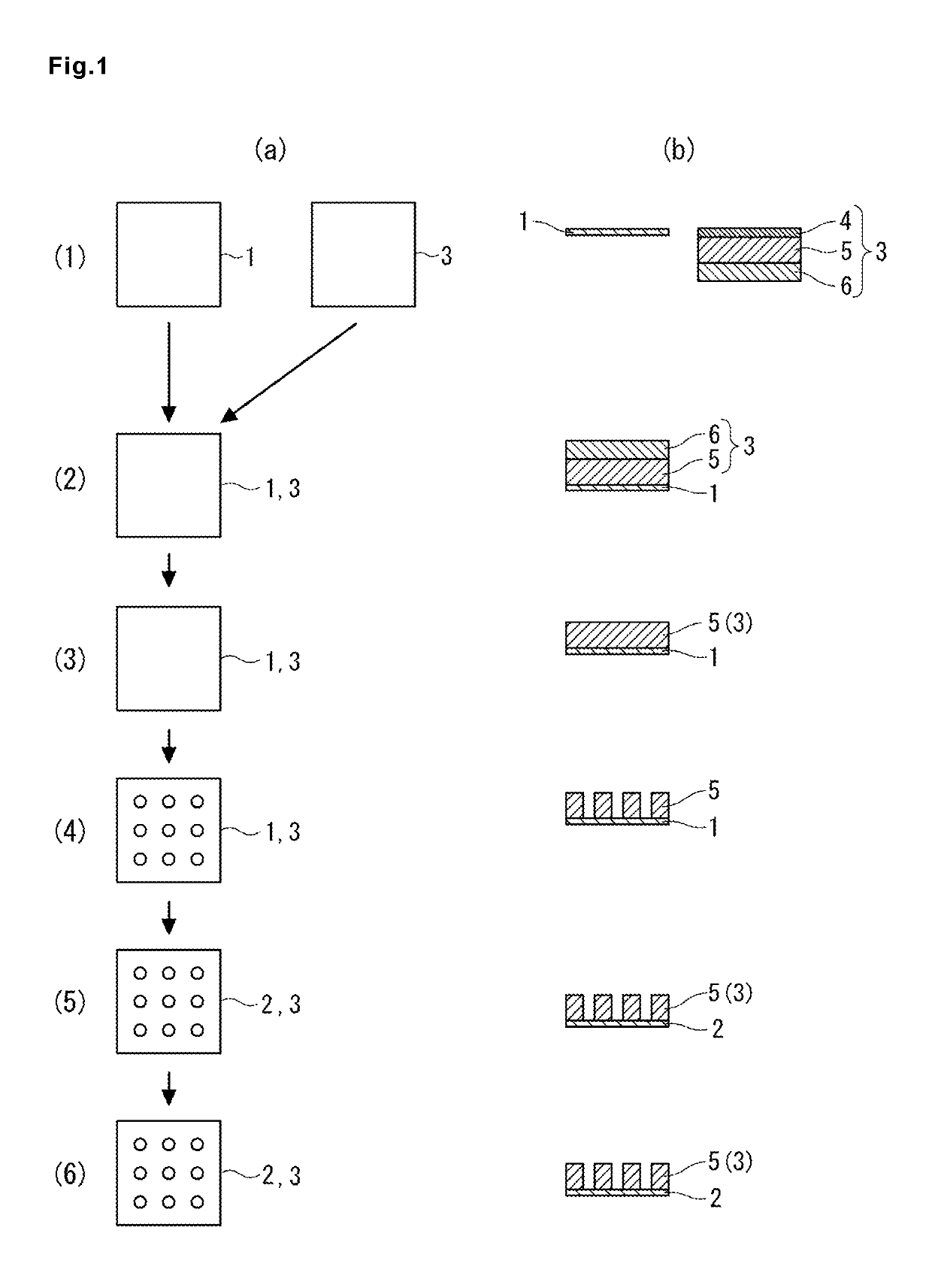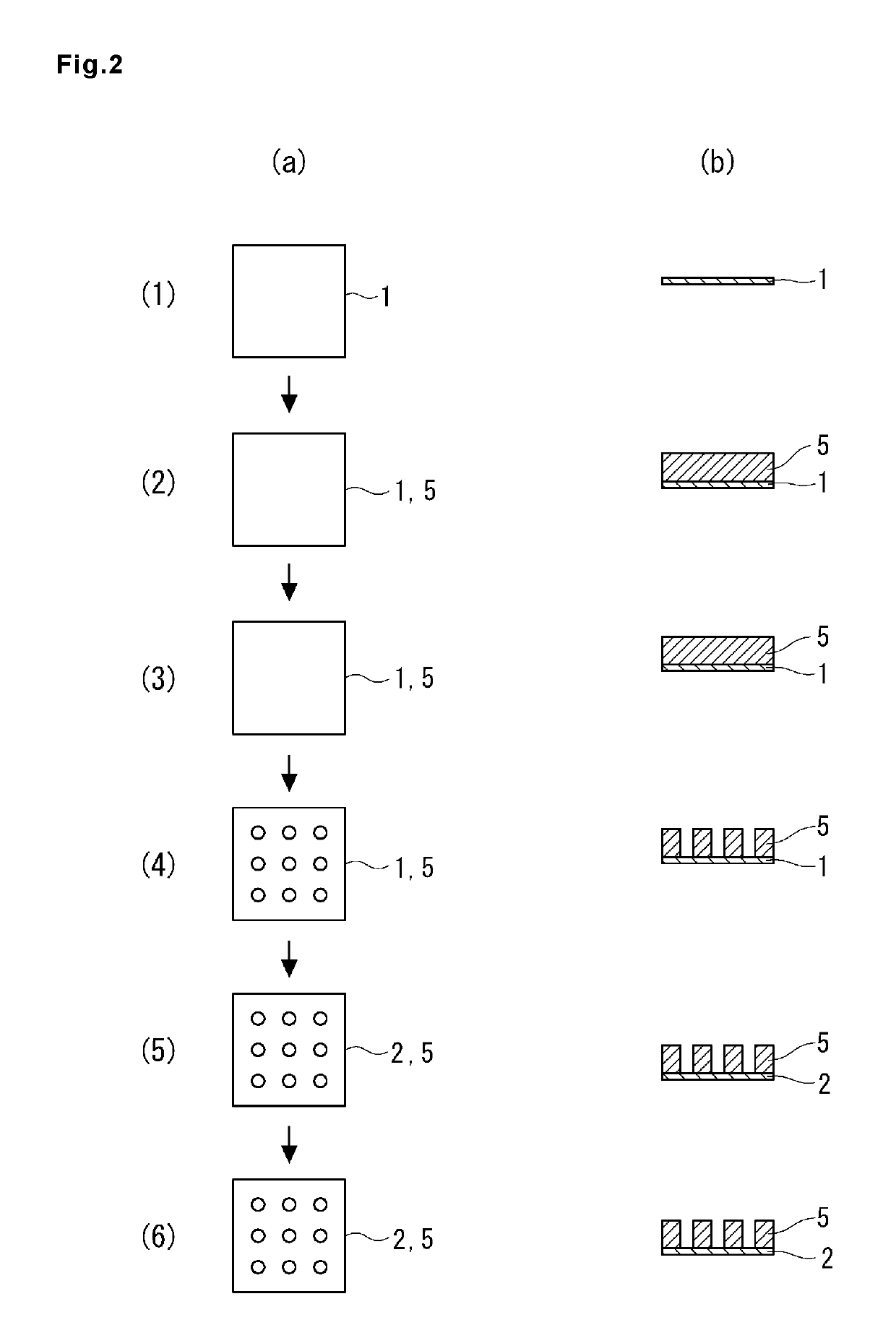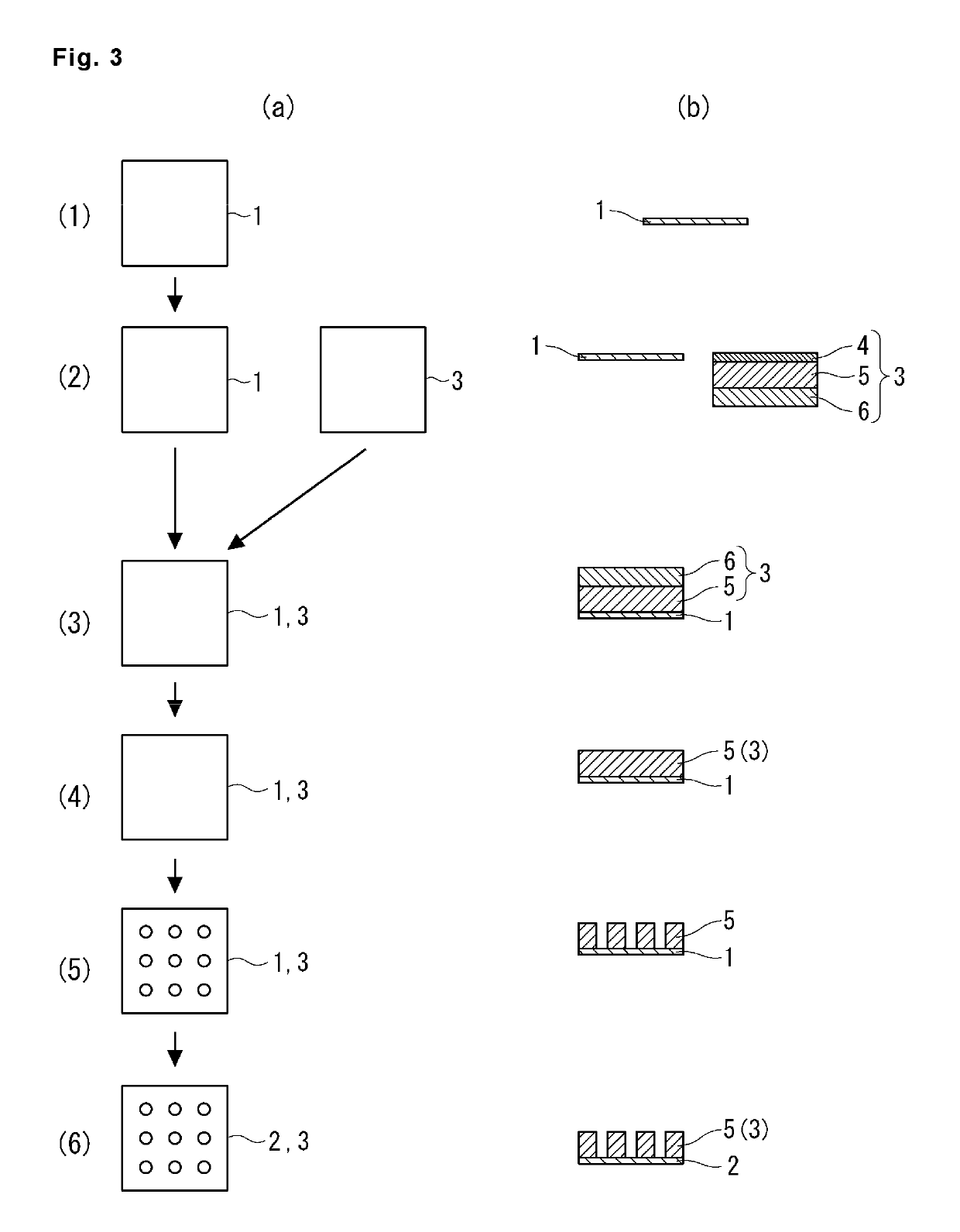Method for producing molded filter body
a filter body and mold technology, applied in membrane technology, coatings, membranes, etc., can solve the problems of difficult control of reaction, uneven size of water passage holes to be formed in graphene, low productivity, etc., to achieve easy control, prevent damage to the support, prevent fouling of graphene
- Summary
- Abstract
- Description
- Claims
- Application Information
AI Technical Summary
Benefits of technology
Problems solved by technology
Method used
Image
Examples
first embodiment
[0046]Hereinafter, a method for producing a molded filter body according to the present invention will be described.
[0047]In the molded filter body, graphene is used as a filter.
[0048]In the present invention, a layer of a support is formed on a surface of graphite 1, and the support is peeled off from the graphite 1 in a state of attaching the layer of the graphene on the surface of the graphite 1 to the layer of the support, as a result of which a layer of graphene is formed on the surface of the support.
[0049]As the graphite 1, it is preferred to prepare graphite with favorable crystallinity.
[0050]For example, highly oriented pyrolytic graphite (HOPG), or kish graphite can be used.
[0051]In this embodiment, 1 cm2 of HOPG having a thickness of 1 mm is prepared, Scotch tape (registered trademark, manufactured by 3M Company) is stuck and peeled off, the basal surface is peeled off, and the clean surface is prepared so as to be exposed.
[0052]As shown in FIG. 1(1), a film resist 3 made...
second embodiment
[0105]In the second embodiment, firstly, as shown in FIG. 2(2), a resist layer 5 is formed on the clean surface of the graphite 1.
[0106]It is desired that the resist has the similar performance as that of the first embodiment except for being a liquid resist.
[0107]As such a liquid resist, SU-8 3050 manufactured by MicroChem Corp., which is an epoxy-based resin, is used.
[0108]Using a spin coater, a liquid resist is spin-coated at 3000 rpm for 20 seconds to forma resist layer 5 with a thickness of 50 μm on the graphite 1.
[0109]After the spin coating, soft baking is performed at 95° C. for 20 minutes using a hot plate to cure the resist layer 5.
[0110]These steps are performed in a yellow room in order to prevent the resist layer 5 from being exposed.
[0111]Next, as shown in FIG. 2(3), the resist layer 5 is exposed and stabilized.
[0112]The resist layer 5 is irradiated at 200 mJ / cm2 with an i-line stepper (EXP-2031 manufactured by ORC MANUFACTURING CO., LTD.) using a high-pressure mercury...
third embodiment
[0128]In the third embodiment, firstly, as shown in FIG. 3(1), graphene water passage holes are formed in the graphite 1.
[0129]A calcium nitrate ethanol solution is spin-coated on a clean surface of the basal surface of graphite 1 by using a spin coater, and then dried at 100° C. After that, when the resultant dried matter is heated under an atmosphere of inert gas at 300° C. for 10 minutes by using a muffle furnace, carbon atoms of the graphite 1 are oxidized by oxygen atoms in the calcium nitrate.
[0130]In this way, graphene water passage holes can be formed in the graphene 2 of the upper several layers on the basal surface of the graphite 1.
[0131]In addition to a nitrate, a hydrochloride, a sulfate, a carbonate or the like may be used to spin coat the graphite 1 to form graphene water passage holes.
[0132]Among them, a nitrate and a carbonate which are decomposed and removed by a heat treatment are preferred to a sulfate and a hydrochloride which remain in the graphite 1 and are di...
PUM
| Property | Measurement | Unit |
|---|---|---|
| temperature | aaaaa | aaaaa |
| temperature | aaaaa | aaaaa |
| temperature | aaaaa | aaaaa |
Abstract
Description
Claims
Application Information
 Login to View More
Login to View More - R&D
- Intellectual Property
- Life Sciences
- Materials
- Tech Scout
- Unparalleled Data Quality
- Higher Quality Content
- 60% Fewer Hallucinations
Browse by: Latest US Patents, China's latest patents, Technical Efficacy Thesaurus, Application Domain, Technology Topic, Popular Technical Reports.
© 2025 PatSnap. All rights reserved.Legal|Privacy policy|Modern Slavery Act Transparency Statement|Sitemap|About US| Contact US: help@patsnap.com



